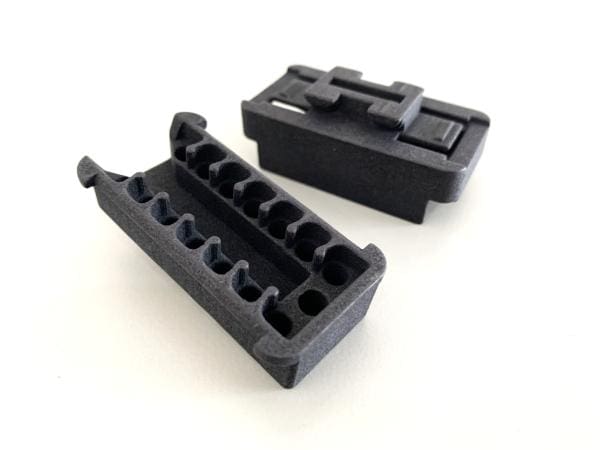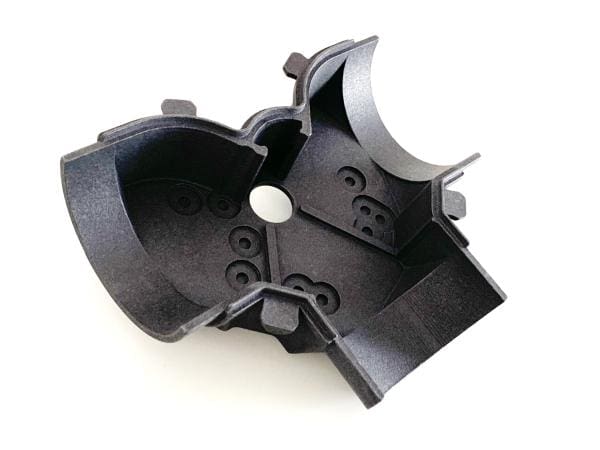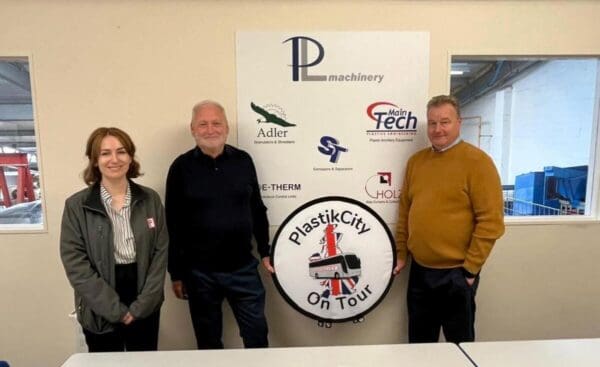
3DPRINTUK | 3D Printing Drives Business in the Automotive Sector
Here at 3DPRINTUK, we have experience working with several automotive OEMs and tier 1 and 2 supply chain companies producing both prototypes and small batch production run using different powder bed fusion (PBF) technologies for a wide variety of applications.
The automotive sector is driven by the need for quality parts delivered promptly and at a competitive price. As such, for various applications, 3D printing is a good fit, allowing the manufacture of impossibly complex geometries in different robust materials speedily and cost-effectively.
Wiesner Design is one company we are pleased to be working with positioned in the automotive sector Wiesner Design. This company combines a passion for classic Porsches and additive manufacturing (AM) to bring rare and no-longer-available parts back to life. Wiesner Design focuses on uneconomical items to injection mould in low volumes, especially where complex geometries are involved. In all cases, the company employs AM to produce parts as good as the original or sometimes better.
I was delighted to catch up with the owner of Wiesner Design, Martin Wiesner, to discover his views on 3D printing, how he uses the technology, and how he works with us as a specialist 3D printing bureau. I began by asking Wiesner to explain what he did at Wiesner Design, how long he had been using 3D printing as a technology, and what he used it for.
“I design and manufacture parts for the automotive aftermarket and electric vehicle conversion industries. Because of my long history with air-cooled Porsches, most of what I do is cantered around classic 911 models and their racing derivatives. This ranges from recreating no-longer-available parts for old Porsches to integrating modern technologies into such cars. I bought my first printer in 2016. It was a somewhat primitive second-hand model but opened my eyes to what’s possible. At the time, 3D printing was viewed by many as a hobby or, at best, a prototyping tool. However, I had other ideas and started experimenting with exotic materials to make end-use parts, first for my car, then later for friends, and eventually, it became a business. I use 3D printing to produce non-structural or semi-structural automotive components that go into various car parts. Non-structural items could be knobs, buttons, air ducts, or electrical connector housings. Semi structural items would require strength and rigidity (often heat resistance) to hold parts in place or keep assemblies together.”

For Wiesner Design, 3D printing is a preferred process as production volumes are often not high enough to warrant injection moulding and are price sensitive for CNC machining. Furthermore, 3D printing sometimes enables the use of geometries that would be hard or uneconomical to manufacture using traditional methods. These attributes are particularly advantageous in motorsport, and electric conversions, where production volumes are often low and design methodologies are agile.
There are numerous 3D printing processes available today for both prototyping and production applications. So I was keen to find out Wiesner’s views on the different processes available and which processes were best suited to which applications.
Wiesner explains, “I follow quite an elaborate decision tree when considering how to manufacture a part. The first thing to remember is that not everything can be 3D printed, and not everything that can be 3D printed should be 3D printed. It’s important to know when to apply each specific manufacturing method and when not to. 3D printing technology is steadily evolving, and more parts can be printed neatly, strongly, and economically.”
“The main factors I base my manufacturing decisions on are strength, heat resistance, surface finish (including detail), and cost. Strength could be divided into impact strength, tensile strength, and more, but to keep it simple, let’s ask whether this is a part that needs to be strong, heat resistant, and not brittle. A bracket that goes into the engine bay of a rally car needs to be very strong, heat resistant, and obviously cannot be brittle. This eliminates resin as a solution because heat-resistant resins tend to be brittle, and impact-resistant resins can’t handle the heat. The remaining choice is between FDM and MultiJet fusion (MJF) and Selective Laser Sintering (SLS).”
“Now the shape becomes a factor. Could this part be printed strongly and neatly on an FDM machine? This is normally a cheaper option than MJF/SLS and yields a lighter result. Unfortunately, unless a part was specifically designed for FDM printing, chances are good that it won’t be neat and strong simultaneously. FDM has three weaknesses: firstly, it easily breaks along layer lines; secondly, it may require support structures to print, which results in rough-looking overhangs; and thirdly, it’s hard to overlook those amateur-looking layer lines. If none of this is a problem, then FDM is the way to go. However, I always first check what MJF/SLS would cost. Sometimes the price difference doesn’t warrant the effort of FDM printing, and I end up using MJF/SLS anyway, enjoying the bonus of a professional-looking part stronger than FDM.”
“If a part is customer facing (which includes mechanics, racing drivers, and bystanders peeking into engine bays), it becomes tough to justify FDM unless the part geometry lends itself towards a neat and strong print time. In many cases, having such a part MJF/SLS printed is worth the extra cost to get a strong and visually appealing result. If the part has a logo or text, FDM becomes even less of an option. On the opposite end of the scale are cosmetic things like knobs, buttons, emblems, and items requiring great detail and smooth surfaces. These parts generally require little strength, never see heat, and could be printed using resin.”

Wiesner adopts a pragmatic view of 3D printing and maintains that AM as a technology doesn’t magically replace all the old tools in the toolbox. Instead, it’s an incredibly powerful new tool that complements the existing tools in ways never thought possible. Wiesner advises any manufacturer to reach out to an expert who understands the technology from a production perspective, not only as a prototyping tool, and see how it could complement what you are already doing. For Wiesner, the beauty of AM is its agility, meaning it can be phased in quickly and cost-effectively by first targeting low-hanging fruit in your business. It usually starts with something as simple as a jig or fixture, which would be tricky to make otherwise, or finally trying out that oddly shaped item that your development team or engineers have been shying away from. That’s how Wiesner designed and manufactured parts for some globally respected Porsche tuners and manufacturers by helping them test the water first and showing them a glimpse of what’s possible. After that, the technology finds its way into existing and new projects.
Wiesner provides an example of 3D printing’s usefulness compared to alternative routes to the market. “The best example is probably the notoriously complex and no-longer-available classic Porsche 911 air distribution box and its internals which I now manufacture. The originals were made from bakelite which became brittle over time and eventually cracked or completely broke. A good percentage of old Porsches need to be replaced with one or more parts from this assembly. Because of its odd shape, it is expensive to manufacture using traditional methods, and FDM printing falls short for the same reason. However, it’s possible on an industrial MJF or SLS machine, and I now have those parts printed by 3DPRINTUK. This is where one of AM’s other strengths comes into play — I don’t have to keep stock. I have these items printed on demand, as and when ordered.”

When the demand is for SLS/MJF, Wiesner Design works with 3DPRINTUK, which has years of experience working with PBF technologies. Wiesner first worked with 3DPRINTUK at the beginning of 2021, a key stimulus being the superior user interface, an easy-to-understand and competitive pricing structure, and the production of consistently high-quality parts. By way of conclusion, I asked Wiesner what he thought about 3DPRINTUK and his views on the company from a customer perspective.
“Consistency and reliability are probably 3DPRINTUK’s strongest attributes, in my view. If there were five things I would want someone reading this to know about them, they would be. First, any technology has limitations, and 3DPRINTUK doesn’t shy away from theirs. Instead, they help their customers to make the most of what the technology offers. Second, I enjoy sending designs their way, knowing they will be printed on the latest industrial machines that I don’t have to own or maintain myself. Third, their user interface. Try it!! Fourth, they can’t perform miracles but have pulled it off once or twice for me. And fifth, they are a fun bunch who likes cars, technology, and printing nice stuff for people.”
Written by Nick Allen, Managing Director, 3DPRINTUK
Read more from 3DPRINTUK here.
3DPRINTUK
+44 (0) 208 692 5208
Website
Email





